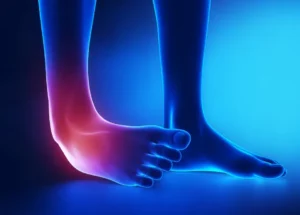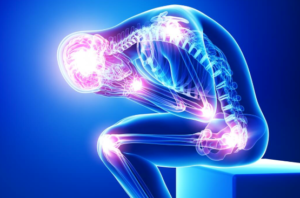The shoulder is one of the body’s most mobile joints. It offers a remarkable range of motion, which is fundamental to athletic performance in many sports. This mobility comes at the cost of stability. The joint’s complex structure makes it susceptible to a variety of injuries. This can particularly be the case for individuals who engage in repetitive overhead motions or high-impact activities. Athletes frequently experience shoulder pain that may range from a minor ache to a debilitating condition that hinders their ability to compete.
What Causes Shoulder Pain?
Shoulder pain in athletes often stems from overuse, acute injury, or underlying instability. The specific cause can vary based on the sport and the type of movements involved. One common source of pain is rotator cuff tendinitis. The rotator cuff is a group of four muscles and their tendons that surround the shoulder joint, keeping the head of the upper arm bone securely within the shoulder socket. Repetitive overhead activities may lead to inflammation and irritation of these tendons, resulting in pain and weakness.
Instability is also a frequent issue. A sudden injury, like a fall or a direct blow, can cause the shoulder to dislocate, meaning the head of the upper arm bone pops out of the socket. Once a shoulder has been dislocated, it is more prone to future dislocations and a general feeling of looseness. Repetitive strain may also lead to chronic instability as ligaments become stretched over time.
How Is the Cause Diagnosed?
A correct diagnosis is foundational to developing an effective treatment plan. The diagnostic process typically begins with a thorough medical history and physical examination. A physician will ask about the nature of the pain, when it began, and what activities make it better or worse. During the physical exam, the doctor will assess the shoulder’s range of motion, strength, and stability.
Imaging studies are often used to confirm a diagnosis and evaluate the extent of an injury. X-rays can reveal problems with the bones, such as fractures or arthritis. For suspected soft tissue injuries involving tendons and ligaments, a magnetic resonance imaging (MRI) scan may be ordered. An MRI provides detailed images of the soft tissues and may help identify tears, inflammation, and other abnormalities.
How Is Pain Treated?
The approach to treatment depends on the specific diagnosis, the severity of the injury, and the athlete’s goals. Initial treatment often involves rest from the aggravating activity and the use of nonsteroidal anti-inflammatory drugs (NSAIDs). Physical therapy is a cornerstone of recovery for most shoulder conditions. A physical therapist can guide the athlete through a tailored program of exercises designed to restore range of motion, strengthen shoulder muscles, and correct any improper mechanics. When conservative treatments fail to provide relief or in cases of severe structural damage, such as a complete rotator cuff tear or significant instability, surgery may be necessary. Surgical procedures may range from minimally invasive arthroscopic techniques to more extensive open surgery to repair torn tissues or stabilize the joint.
Consult an Orthopedic Specialist
Shoulder pain may significantly affect an athlete’s performance and quality of life. Self-diagnosing or ignoring the pain can lead to a more severe injury and a longer recovery period. A qualified medical professional can provide an accurate diagnosis and prescribe a personalized treatment plan to help you return to your sport safely and effectively.














